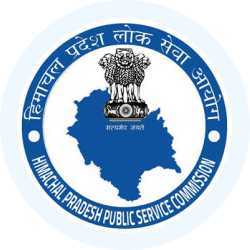Ramsar Wetland Sites in Himachal Pradesh | HPPSC HPAS Preparation - HPPSC HPAS (Himachal Pardesh) PDF Download
Understanding Wetlands
Wetlands are regions where water either covers the ground or remains near the surface for extended periods. The presence of water significantly influences soil composition and determines the flora and fauna that inhabit these areas. These ecosystems can support a diverse range of aquatic and terrestrial life forms.
Functions of Wetlands
Wetlands play crucial roles in maintaining ecological balance and supporting various forms of life. Here are some key functions:
- Flood Control: Wetlands act as natural sponges, absorbing excess water during heavy rainfall and reducing the risk of flooding in surrounding areas.
- Sediment and Erosion Control: They help in trapping sediments, preventing erosion, and maintaining water quality in adjacent water bodies.
- Nutrient Recycling: Wetlands efficiently recycle nutrients, playing a vital role in nutrient cycles and supporting plant growth.
- Water Purification: Through natural processes, wetlands filter pollutants and improve water quality.
- Flood Mitigation: By storing excess water, wetlands reduce the impact of floods and protect downstream areas.
- Groundwater Recharging: Wetlands contribute to recharging groundwater reserves, ensuring a sustainable supply of water.
- Supporting Biodiversity: They provide habitats for a wide range of species, contributing to biodiversity conservation.
- Climate Regulation: Wetlands play a role in climate stability through carbon sequestration and influencing local weather patterns.
- Streamflow Maintenance: They help regulate water flow in rivers and streams, ensuring consistent water availability downstream.
- Shoreline Protection: Wetlands serve as natural barriers, protecting coastlines from erosion caused by waves and currents.
- Economic and Cultural Value: Wetlands support various economic activities such as tourism, recreation, and cultural practices, contributing to local livelihoods and heritage preservation.
Ramsar Convention Sites in India
The Ramsar Convention, established in 1971, is an international treaty that emphasizes the importance of conserving and sustainably utilizing wetlands. It recognizes the ecological, economic, cultural, scientific, and recreational significance of wetlands worldwide.
Ramsar Convention
- The Ramsar Convention came into effect in India on February 1, 1982.
- Sunderban, a wetland site in West Bengal, was added to the list on February 1, 2019.
- In January 2020, India included 10 additional wetlands under the protection of the Ramsar Convention.
Newly Added Wetlands
- The 10 new wetlands are Nandur Madhameshwar in Maharashtra; Keshopur-Miani, Beas Conservation Reserve, and Nangal in Punjab; and Nawabganj, Parvati Agra, Saman, Samaspur, Sandi, and Sarsai Nawar in Uttar Pradesh.
Wetlands in Himachal Pradesh
Himachal Pradesh boasts a total of 92 wetlands covering an area of 2.25 hectares, with 85 being natural and 7 man-made, constituting one percent of the state's total geographical area.
- Ramsar Sites in Himachal Pradesh: Pong Dam Lake, Chandratal, and Renuka have been designated as Ramsar sites.
- Other Notable Wetlands: Rewalsar and Khajiar lakes fall under national wetlands.
1. Pong Dam Lake (Kangra)
Date of declaration: 19.08.2002
Area: 307.29 sq. km
2. Chandertal Wetland (Lahaul Spiti)
Date of declaration: 08.11.2005
Area: 38.56 sq. km
3. Renuka Wetland (Sirmaur)
Date of declaration: 08.11.2005
FAQs on Ramsar Wetland Sites in Himachal Pradesh - HPPSC HPAS Preparation - HPPSC HPAS (Himachal Pardesh)
| 1. What are Ramsar Sites and why are they important in India? |  |
| 2. How many Ramsar Wetland Sites are there in Himachal Pradesh? |  |
| 3. What criteria must a wetland meet to be designated as a Ramsar Site? |  |
| 4. What are the threats faced by Ramsar Wetland Sites in India, particularly in Himachal Pradesh? |  |
| 5. How can individuals contribute to the conservation of Ramsar Wetland Sites? |  |

|
Explore Courses for HPPSC HPAS (Himachal Pardesh) exam
|

|
















